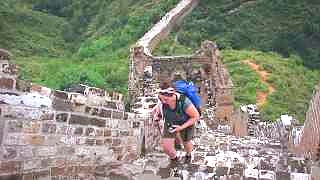Shangri-la County, north west Yunnan province.
The hotel featured is the BanYan Tree. A beautiful place ...
[640],shadow=true,start=,stop=

Live more ...
 Shangri-la 香格里拉, YunNan province
Shangri-la 香格里拉, YunNan provinceShangri-la County, north west Yunnan province.
The hotel featured is the BanYan Tree. A beautiful place ...


|
For over 30 years, the Harbin Snow and Ice World has wowed visitors from round the globe ...
|

|
Visiting a few sections of the Great Wall of China near BeiJing, including 'Wild Wall' ...
|

|
How to order MaPo DoFu, GongBao JiDing ...
|

|
Near SiMaTai Great Wall ...
SiMaTai Great Wall night walk ...
|

|
A beautiful waterfall in YunNan - LuoPing JiuLong ...
|

|